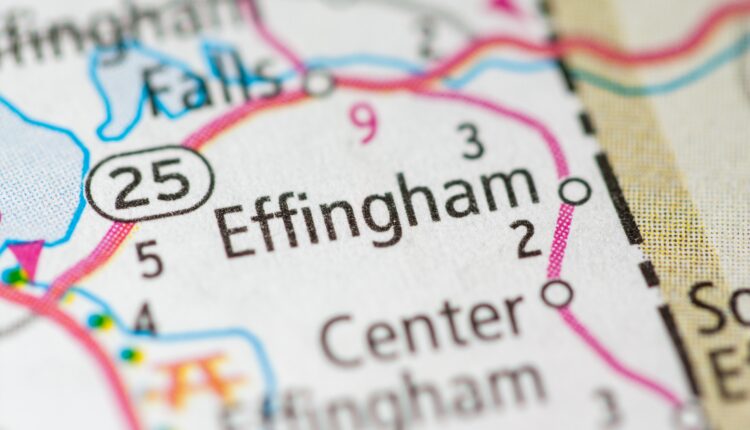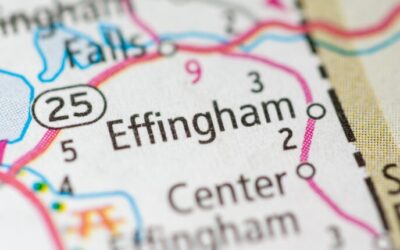
Photo courtesy of Shutterstock.
Learn about eight instances of devastating natural disasters in New Hampshire.
No one would argue that New Hampshire is known for its natural beauty, but it has also had its fair share of natural disasters. Here’s a brief overview of eight of the worst natural disasters in the state’s history.
Earthquakes in New Hampshire
In 1638, just 16 years after the New Hampshire Colony was established, an earthquake that would now be registered as 6.5 on the Richter Scale was centered between Concord and Laconia in New Hampshire. According to the Northeast States Emergency Consortium, it was the first significant quake in colonial New England. The event was so powerful that colonists could not stand up without holding on to something solid.
A year before the American Revolution rattled the colonies, New Hampshire was shaken by another massive quake. The tremblor that hit the Northeast on November 19, 1775, collapsed brick buildings, chimneys, and roofs from Portsmouth to Portland. Though the Richter Scale did not exist then, some estimate it would have registered from 6.0 to 6.3.
From that first earthquake in 1638 through the end of 2016, 320 felt earthquakes are known to have been centered in New Hampshire. Many more earthquakes that were too small to be felt have been detected during recent decades by modern instrumental seismic monitoring, according to the Northeast States Emergency Consortium. Since the 1970s, the area just north of Concord has been New England’s most seismically active locality.
Fires in New Hampshire
Three devastating fires in Portsmouth in the 19th century, all during the Christmas season, led to a complete change in the seaport’s architecture. The first fire on Dec 26, 1802, began in an old wooden building and destroyed 100 homes. The second, resulting from a badly insulated hearth, broke out four years later in a line of commercial buildings along the Piscataqua River. The blaze leveled all the buildings and a 1732 church, resulting in $130,000 in damages ($6,500,000 in today’s money).
The final conflagration happened on December 22, 1813, when a fire, said to have been set by an angry servant, broke out near Court and Pleasant Streets. The blaze destroyed 15 acres, 108 homes, and 64 government and business buildings. It was so incendiary that it could be seen as far away as Salem, Massachusetts.
The disaster sparked the state legislature to pass the Brick Act of 1814. The law required every building over 12 feet high in the downtown area to be built of brick. It did the trick; not only are many of those buildings still around today, but they also give the city its signature historic look.
Hurricanes & floods in New Hampshire
Some consider the Great New England Hurricane of September 1938 the worst natural disaster in the history of New Hampshire.
Winds at Mount Washington reached 163 miles per hour and wiped out a trestle on the Cog Railway. High winds felled trees and power lines, with the worst damage in Peterborough, where 10 bridges were destroyed. The lower portion of downtown burned because floodwaters stopped fire personnel from reaching and extinguishing flames. In total, 13 people died in New Hampshire, but 700 died in New England as a whole. Property damage due to a combination of winds and floods in New England totaled $41 billion in today’s economy.
The 2005 Columbus Day Flood hit southwestern New Hampshire hard. The flood took place on October 8 and 9, following a storm that dropped seven inches of rain in 30 hours. The worst damage was in Alstead along the Cold River, Walpole, and Langdon. Four people were killed, 40 homes were destroyed, and upwards of $25 million in damage was done. In 2015, a plaque commemorating the flood that nearly destroyed Alstead and killed four of its residents was installed on a stone along Cold River.
Cold weather in New Hampshire
The eruption of Mount Tambora in Indonesia in 1815 spewed so much dust and ash into the atmosphere that it lowered temperatures by two to seven degrees worldwide. The effects in New Hampshire and all over New England occurred a year later and became known in these parts as “The Year Without Summer,” “Poverty Year” or “Eighteen Hundred and Froze to Death.” There was a hard frost every month, and six inches of snow fell in June, causing crops to fail, livestock to die, and grain food prices to soar.
During the Ice Storm of 2008, on December 11 and 12, rain froze across the landscape, dragging down limbs, trees, and power lines. According to power utilities at the time, no other storm in New Hampshire’s history had inflicted as much damage. The storm left 400,000 customers without power, some for as long as two weeks. Countless trees and limbs fell under the weight of the ice, 780 utility poles were damaged, and 1,300 transformers were destroyed.
Snow in New Hampshire
All snowstorms are measured by the Great Blizzard of 1978. The snow lasted for 33 hours, with tides 13 feet above average and hurricane-force winds of 83 miles per hour, dropping two feet of snow from February 6 through 7. Roadways were littered with abandoned cars, which disrupted road travel for a week. Snow drifts rose as high as eight feet. The storm began as an extra-tropical low system off the coast of South Carolina, which mixed with frigid Arctic air as it headed north.
In total, the storm killed 100 people in the Northeast, injured 4,500, and resulted in more than $520 million in damages across the region.
This article first appeared on Good Info News Wire and is republished here under a Creative Commons license.

5 unsung films that dramatize America’s rich labor history
By Peter Dreier, Occidental College The U.S. is in the midst of a new upsurge of union organizing. Is a Hollywood drama about angry Starbucks...

What New Hampshire’s immigrant population looked like in 1900
What New Hampshire's immigrant population looked like in 1900 Since the first successful English colony settled in Jamestown in 1607, flows of...

Take a trip along the Black Heritage Trail of NH
The Black Heritage Trail features a series of historic markers throughout NH towns. It serves as an acknowledgment of the history of Black...

The answers to 6 burning questions about Mount Washington
Head up New Hampshire’s tallest peak with these facts about Mount Washington tucked into your backpack. As we approach hiking season, it’s good to...

Black History Month explained: Its origins, celebrations and myths
By HAYA PANJWANI Associated Press WASHINGTON (AP) — Beginning Feb. 1, schools, museums and communities across the nation will mark the start of...

The strangest New Hampshire town names
Learn about seven funky New Hampshire town names and the fascinating stories behind them. 1. Stark Though its name might sound basic and bare, this...





